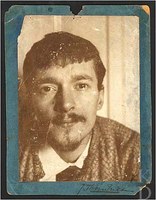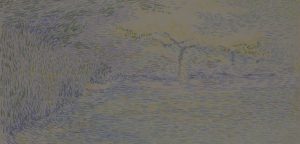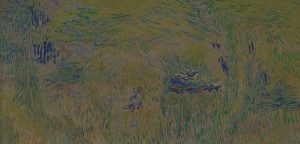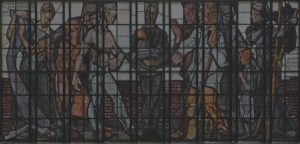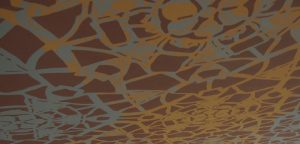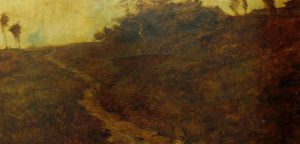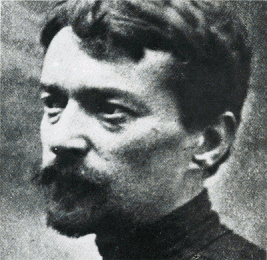He was born on the 5th of June in 1868 in The Hague, the Netherlands.
1868 - 1932
Jan Thorn-Prikker
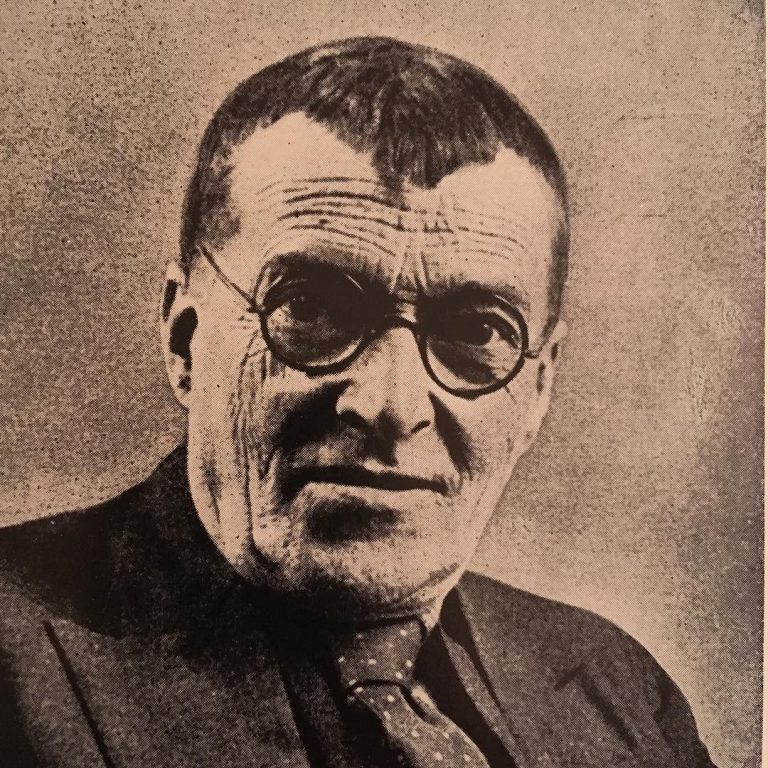
description
Jan (Johann) Thorn-Prikker was a Dutch artist, illustrator and master of arts and crafts, who lived and worked in Germany.
His father was an amateur artist. Jan studied painting at the Art Academy of his native city from 1883 to 1887. Student works of the artist were made in the style of impressionism.
Jan Thorn-Prikker worked mainly in the art nouveau style (Jugendstil), but also collaborated with Symbolists, participating in the exhibitions of The Belgian Society of Les XX. Thorn-Prikker is famous for his picturesque works, stained-glass windows, decorative murals of temples and public buildings. The great merit of the artist is the revival of the ancient art of glass mosaic, which he not only applied himself but, also taught to numerous students.
Key Ideas:
– Virtually all of Thorn Prikker’s work is based on religious themes. Since the artist was a deeply religious person, for his works he chose Christian themes, saturated with biblical images and symbols. One of such works is his painting “Madonna in Tulips”, which is the visiting card of the master. The picture is an elegant combination of a spiritualized image of the Madonna with decorative and smooth lines of Art Nouveau. Lush floral ornaments, flickering soft shades of similar colors – these are the features that are typical for many of the author’s works.
– Jan Thorn-Prikker paid much attention to decorative art, creating not only stained glass and mosaic of amazing beauty, but also furniture design, patterns for fabrics and dishes in the art nouveau style. His work is distinguished by a harmonious combination of subdued colors: dark green, purple, sand and brown, as well as a beautiful vision of his works in the context of the style and shape of the building where they are located.
– The artist had a rare ability to work with a variety of materials: glass, ceramics, stone, fabrics, which became real works of art in the skillful hands of the master.
– Thorn-Prikker sought to ensure that his works not only had aesthetic value, but also served people for many centuries. Approximately from 1902, the artist ceased to work as a painter and fully devoted himself to church and applied art, painting churches and creating unique stained-glass windows.
1868
1890
1892 - 1898
1904 - 1908
1910
1920 - 1932
1932
The birth of the artist
“Les XX”
With the help of famous artist Jan Torop, he joined the Belgium group “Les XX” and participated in its collective exhibitions. During that period, Thorn-Prikker got acquainted with works of Symbolists Puvis de Chavannes and Gustave Moreau and the painters of The Nabi group. These paintings, as well as paintings by Maurice Denis had a great influence on the artist, as they harmoniously combined the latest art techniques with the traditional painting of Catholics.
Prikker became the head of the fine art department of Arts and Crafts company
Met Josephin Peladan and became a member of the mystical “Order of the Rosicrucians”. He was fond of Symbolism and exhibited his works at the salon “The Rose and the Cross.” Most of his paintings in the symbolic style were created during this period – a vivid example is the canvas “Madonna in Tulips,” painted in 1892, which shows a combination of religious images with flowing lines and floral ornaments of Art Nouveau. This year was the beginning of the friendship and cooperation of the artist with A. van de Velde – one of the founders of the Belgian branch of Art Nouveau, an outstanding master of this style. Working together on major projects, the artists, uniquely designed Villa Chaika in Scheveningen. Prikker became the head of the fine art department of Arts and Crafts company, which sold works of art in The Hague.
He moved to Germany
Not having the support of his work from his compatriots, as well as for some political reasons, he moved to Germany. Here he worked as a teacher at the Krefeld Graduate School of Applied Arts. Closely got acquainted with the works of great masters of the past, such as Michelangelo, Botticelli, Masaccio and others, traveling to Italy, visited Denmark.
The artist visited France
After working on a large project in Hagen, he received many orders for wall paintings and glass mosaics, as well as for interior designs. The most significant became works for the for the assembly house in Neuss made in 1912 and the stained-glass windows of the Hagen station. The artist visited France, taught at the Folkwang Art School in Hagen. Between 1914 and 1916, the artist worked on the design of the interior of the Old Catholic Church of the World in Essen – one of the most vivid examples of the religious Art Nouveau.
He created works of wall painting in the city halls of Amsterdam and Rotterdam
After the ending of the First World War, he taught the technique of mosaic and the basics of monumental painting at art schools and academies in Munich, Dusseldorf and Cologne. He created works of wall painting in the city halls of Amsterdam and Rotterdam.
The death
He died on the 5th of March in 1932 in Cologne, Germany.

